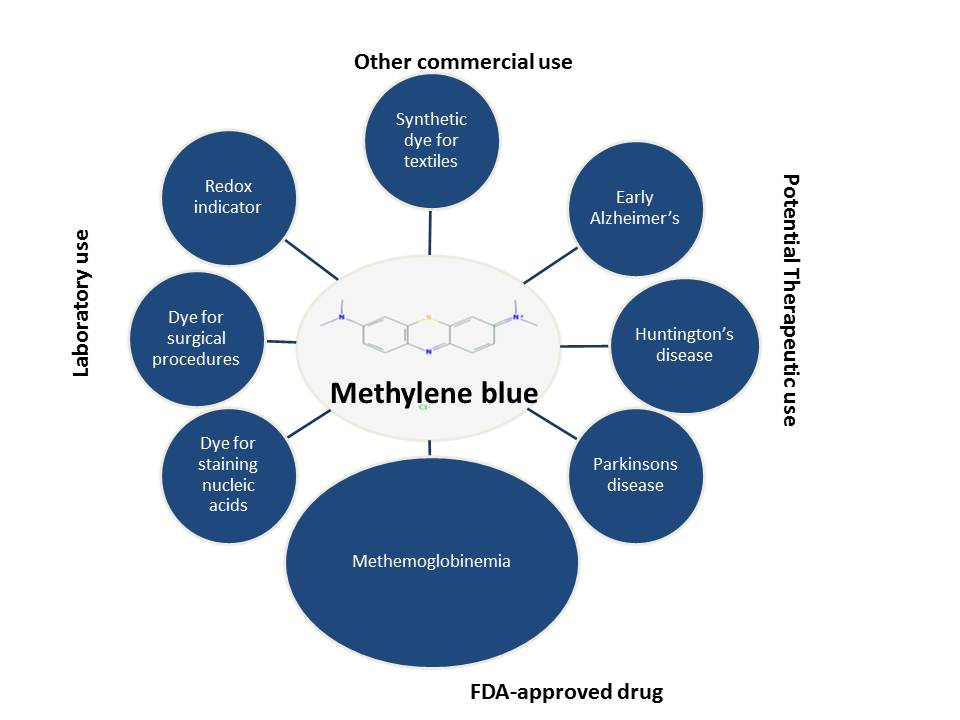 When I first came across an article about methylene blue being protective against neuronal death, I was intrigued. I had always associated methylene blue (sometimes confused with methyl blue—an entirely different molecule) with staining nucleic acids or proteins following membrane transfer or with staining bacteria or its use as a redox indicator. It turns out that methylene blue (MB) has an extremely wide range of applications: commercial (dye in the textile / paper industry), laboratory (supravital dye, redox indicator) and an amazingly large plethora of clinical and therapeutic (early Alzheimer’s disease, mild cognitive impairment) applications(1). In fact, MB is an FDA-grandfathered antidote for the treatment of methemoglobinemia, a condition characterized by elevated levels of oxidized form of hemoglobin that interferes with its ability to release oxygen to the tissues.
When I first came across an article about methylene blue being protective against neuronal death, I was intrigued. I had always associated methylene blue (sometimes confused with methyl blue—an entirely different molecule) with staining nucleic acids or proteins following membrane transfer or with staining bacteria or its use as a redox indicator. It turns out that methylene blue (MB) has an extremely wide range of applications: commercial (dye in the textile / paper industry), laboratory (supravital dye, redox indicator) and an amazingly large plethora of clinical and therapeutic (early Alzheimer’s disease, mild cognitive impairment) applications(1). In fact, MB is an FDA-grandfathered antidote for the treatment of methemoglobinemia, a condition characterized by elevated levels of oxidized form of hemoglobin that interferes with its ability to release oxygen to the tissues.
What makes this compound, so rightly called “magic bullet” so unique and versatile? Continue reading “Dyed cells live longer?”
